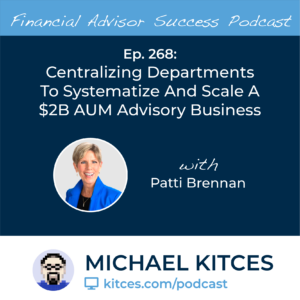The financial advisor marketplace is an incredibly fractured one, where even the largest mega-firms with 10,000–20,000 financial advisors have only single-digit market share, and tens of thousands of advisors operate on an entirely standalone basis as solo advisors. Which means it’s incredibly difficult for most advisor-technology solutions to grow and gain market adoption because of the challenges in just reaching advisors… one firm at a time. It also means that it’s very difficult to figure out which technology tools are ‘best’ and most popular amongst advisors.
To address this, the industry has produced a number of advisor technology studies, but most are conducted via ‘open-link’ surveys, which are subsequently distributed by the vendors themselves to their users, turning the surveys from objective measurements of adoption and satisfaction into a ‘voter turnout’ exercise for the vendors. Which is why last year, Kitces Research launched its own Independent Advisor Technology study, using a more robust sampling methodology to get a clearer perspective on what tools are really the most popular and most liked within the advisor community.
Overall, the results of the Kitces Independent AdvisorTech study show a remarkably tight link between the technology that advisors deem most important (which has the highest demand), and advisor satisfaction with those tools, signaling that, in most categories, the marketplace really is remarkably efficient at iterating on in-demand software to meet advisor needs.
However, the latest Kitces research also shows that a shift is underway, with a number of advisor software categories in the aggregate gaining far more advisor satisfaction than their current adoption reflects, signaling the potential for accelerated growth in key categories (including advice engagement, plan monitoring, specialized planning tools, and the billing and eSignature process of client onboarding). At the same time, a number of ‘traditional’ advisor software categories (including CRM systems, performance reporting, compliance, digital marketing, and especially account aggregation) are particularly prone to disruption from new competitors. And in some categories (like trading and risk/behavioral assessments), advisors are so dissatisfied with the current solutions that a disproportionately high number of firms are building their own solutions from scratch, rather than buying anything in the existing marketplace!
Which shows how, as the advisor value proposition increasingly shifts from a focus on product sales and portfolio management to the delivery of advice itself as a service for which advisors charge fees, there is an emerging gap in advisor technology to solve the problems of advice delivery itself. And at the same time, while the leading advisor technology firms are trying to add (or even acquire) complementary features to become more ‘all-in-one’ systems, advisors are increasingly looking to alternatives to implement a more ‘best-of-breed’ approach to fill in the unique gaps they’re experiencing in their own firms.
In the end, though, the latest Kitces Independent Advisor Technology research shows that the advisor technology marketplace remains incredibly robust, and that, despite more than 300 offerings on the AdvisorTech Solutions Map, and existing incumbents who continue to retain their market leadership in the core of the advisor technology stack, there is still a great deal of opportunity for new firms to grow and capture market share, especially as the advisor business model itself continues to change and evolve!

 Welcome back to the 268th episode of the Financial Advisor Success Podcast!
Welcome back to the 268th episode of the Financial Advisor Success Podcast! Welcome back to the 267th episode of the Financial Advisor Success Podcast!
Welcome back to the 267th episode of the Financial Advisor Success Podcast!
